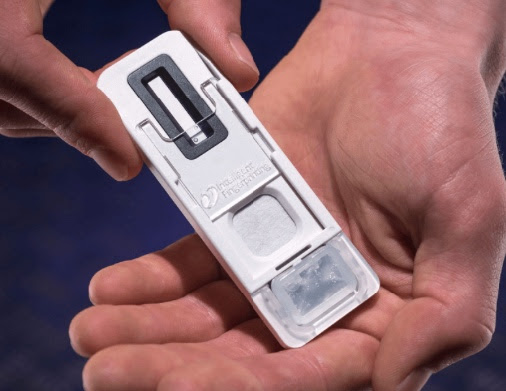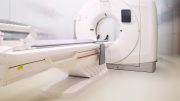Intelligent Fingerprinting, the pioneering company behind the world’s first portable fingerprint-based drug test system, has launched a new drug screening test designed to meet the needs of drug rehabilitation organisations looking for a simpler, more dignified and non-invasive approach to supporting their clients’ progress towards recovery.
The fingerprint-based drug test, takes less than a minute to collect a client’s fingerprint sweat samples onto the small drug screening cartridge and just ten minutes to screen for the opioid substitution drugs methadone and buprenorphine, which are commonly used to assist recovery from substance abuse. The new drug treatment screening cartridge also tests for benzodiazepines as well as opiates, significantly enhancing the range of Intelligent Fingerprinting products available to drug treatment service providers such as CGL.
The simple, dignified and non-invasive nature of fingerprint-based drug testing makes it ideally suited to the needs of drug treatment services. The portable system is designed for use in a variety of situations including non-clinical settings, making it easier for drug treatment programme staff to set up screening sessions, collect samples, administer tests and obtain results quickly. This allows test outcomes to be discussed with clients during the same session – a key factor in helping to keep a client’s drug recovery on track – while also giving drug treatment staff the opportunity to build closer relationships with the clients who most need their support.
Intelligent Fingerprinting’s drug treatment test is also more dignified, hygienic and convenient than traditional test approaches such as those requiring saliva or urine samples. In addition to the new test, drug treatment organisations will continue to benefit from the award-winning organisation’s other drug testing products which include a four-panel test for methamphetamine, cocaine, opiates and cannabis, as well as a laboratory confirmation service.
Fingerprint-based drug testing – how it works
Intelligent Fingerprinting’s drug testing solution features a small, tamper-evident drug screening cartridge which takes less than a minute to collect fingerprint sweat samples. The Intelligent Fingerprinting portable analysis unit then reads the cartridge and provides a positive or negative result on-screen for all drugs in the test in ten minutes.
“With the development of our new drug test we’re responding directly to feedback from drug treatment providers requesting a combined screen for methadone and buprenorphine, which are often prescribed as part of a recovery programme,” commented Intelligent Fingerprinting’s Dr Paul Yates. “Customer reaction to fingerprint-based drug screening has proved very positive from drug recovery organisations that are already using our system.
“With our enhanced product range we’re now able to support the drug rehab sector’s key drug screening requirements, confirming Intelligent Fingerprinting’s non-invasive, dignified and rapid drug screening solution as particularly applicable for drug programme operators looking for an open and transparent way to support and track their clients’ progress towards recovery,” he added.
According to Vicki Markiewicz, Director of the social care and health charity change, grow, live (CGL): “respect for each person we engage is a core CGL value, and that’s also reflected in our commitment to providing accessible services backed by the most innovative technologies. Intelligent Fingerprinting’s drug screening system is a great example of our approach, allowing us to make non-invasive testing an integral part of our drug treatment programmes. As an early adopter of fingerprint-based testing, we already know that the process is easy and dignified. Now, with the addition of the new drug treatment screening test, we can not only test for drugs to establish adherence to treatment regimes, but also ensure safety in prescribing substitute opioids by testing our service users for drugs that may impact on the safety of prescribing regimes.”





